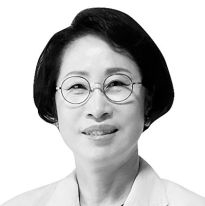No pledges on college innovation

Choe Soon-ja
The author is the chair of the board of directors of Incheon Academy and former president of Inha University.
The biggest reason for the existence of universities is to educate. It was how education worked in the 1960s and 70s. College education was the main factor behind Korea’s achievement of per capita income of $30,000 and world’s 10th largest exports.
Foreign universities do not spare innovation and investment to educate talent tailored for the fourth industrial revolution. But Korean universities are in a crisis of survival and put their existences on the line for the number of enrolled students and paltry government subsidies. The focus of most schools is not on educating but cutting cost. Lab practice were replaced by theoretical lectures, part-time lecturers were hired rather than full-time faculty, and large lectures were increased, which created an even worse education environment than at middle and high schools. Schools cut cost in books and educational environment.
The secret of competitiveness of Harvard University, the undisputed top school in the world, is its drastic investments in new research, securing outstanding faculty and selecting excellent students. Stanford University challenges Ivy League schools in the East Coast as the cradle of spin-off technologies in Silicon Valley, where ICT companies are concentrated.
Stimulated by this development, Cornell University established Cornell Tech Campus on Roosevelt Island, New York, by benchmarking the Stanford-Silicon Valley model to work with the New York City to build a tech-based city. The Cornell University-Technion Institute of Technology in Israel-Google consortium has joined to maximize entrepreneurial orientation. Finland secured the world’s top university competitiveness, research and development workforce ratio and application environment by creating eight industrial clusters of local community, business, university and research institute.
Australia, which boasts world-class competitiveness in the job market, has radically reorganized the school system for the talent entering the global employment market. The University of Sydney introduced a four-year intensive bachelor’s program by adding an additional year to the three-year undergraduate course to help enhance problem-solving skills through research projects and industrial field experience.
Let’s look at the case of Olin College of Engineering, which accepted 75 freshmen (390 students total) in 2002 with its degrees in electric and computer engineering, mechanical engineering and three other engineering subjects. The engineering degree is composed of capstone design, material science, bioengineering, art, humanities and entrepreneurship. Machine tool training is essential for hands-on production and project execution. The school does not have departments, and professors are evaluated every five years with no tenure.
Human resource development is the future of a country and the most important element for any time. Presidential candidates in the March 9 election in Korea are competing to offer hefty benefits — such as hair loss treatment — but they don’t make promises for educational innovation. True youth policy is not about giving out little cash to young people after they enter society but about focusing on enhancing their competitiveness to engage in healthy economic activities. I appeal for a few innovations for a breakthrough in the stagnant university education in Korea.
First, the start of the new school year should be changed to September. Korea starts the school year in March since the Japanese colonial period, and the new school year begins in April in Japan, Pakistan and North Korea. In most other countries, new school year begins in September.
Second, academic reform should break down barriers between departments and majors. The existing division of departments and majors is a product of the 1980s and 90s, when 1 million people were born each year and entered college.
Third, experience-oriented curriculum innovation is needed rather than focusing on theories. Curriculum should be centered on problem-solving projects to find and solve problems in industries, local governments and society. Field experience for one semester or problem-solving projects participated by students with different majors will help enhance productivity for small and medium-sized enterprises.
Fourth is the rationalization of university finances. If it is hard to raise the tuition — nearly frozen for more than 10 years — government funding must be expanded, as in Australia, New Zealand and most European countries.
Translation by the Korea JoongAng Daily staff.










with the Korea JoongAng Daily
To write comments, please log in to one of the accounts.
Standards Board Policy (0/250자)